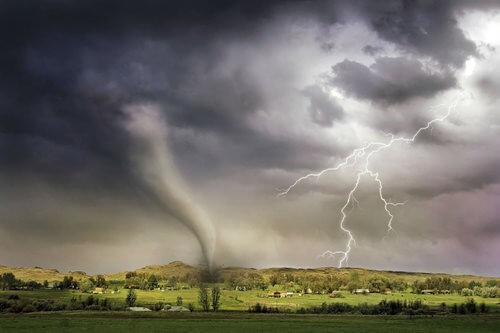Severe Weather Warning: Have You Upgraded Your Inclement Weather Business Continuity Plan?
Author: Steve Greenstein
 We are just a few weeks into the winter season and already have experienced several severe weather events across the world. Severe weather can potentially have a significant impact on the business environment. While there is new evidence for the emerging impact of human-caused climate change as the stimulant for an increase in severe weather events, there is undisputed recognition that their impacts are costlier and more frequently occurring. Although the United States is amid a government shutdown, which limits access to updated and current National Oceanic and Atmospheric Administration [NOAA] statistical data, take a gander at severe weather stats through September 2018. As statistical data bears out, severe weather events carrying nature’s extraordinary power are on the rise and continue to illuminate their catastrophic repercussions.
We are just a few weeks into the winter season and already have experienced several severe weather events across the world. Severe weather can potentially have a significant impact on the business environment. While there is new evidence for the emerging impact of human-caused climate change as the stimulant for an increase in severe weather events, there is undisputed recognition that their impacts are costlier and more frequently occurring. Although the United States is amid a government shutdown, which limits access to updated and current National Oceanic and Atmospheric Administration [NOAA] statistical data, take a gander at severe weather stats through September 2018. As statistical data bears out, severe weather events carrying nature’s extraordinary power are on the rise and continue to illuminate their catastrophic repercussions.
- Through September 2018, there were 11 weather and climate events (mega disasters) with over $1 billion in damages each. This does not include Hurricane Michael or the California wildfires which are estimated to easily surpass the $1 billion level each.
- According to NOAA’s 2017 report, the seven years with the most billion-dollar disasters have all come in the last decade, with 2017 damages totaling $312.7 billion.
- Since 1980, there have been 238 weather and climate disaster events that have exceeded $1 billion to impact the U.S., with total costs exceeding $1.5 trillion.
While inclement weather business continuity planning has long been established at many organizations (classic initial BCPs for most resiliency programs), does your organization have a BCP for severe weather events? The traditional inclement weather BCP typically is built with the assumption that any inclement weather event is short term, perhaps a day or two in duration, with limited impact to the business. Given this approach and planning on a condensed event time-period, most BCPs focus on the basics – communications with employees and establishing a cadence for update monitoring. These plans are rudimentary and tend to focus on employee logistics like working from home options, defining key personnel, scheduling update meetings, and making sure everyone is accounted for. These plans typically do not address potential damages/risks and often do not take into consideration essential business operations, key process recovery procedures and steps, third-party dependencies, supply chain, and more. Hence, the significant problems an organization can and will face if a severe weather event occurs and its impact and duration is not planned for.
Let’s not discard the tried and true inclement weather BCP at your organization (if it exists). Use this plan as the foundation and build upon it in developing the severe weather BCP but with different assumptions. These new assumptions (do not underestimate the impact of mother nature!) should consider that the event will be longer term, will deny access to your facilities/sites, and adversely affect your workforce.
Given these likely scenarios, a comprehensive business impact analysis or a BIA re-fresh should be conducted to prioritize essential business processes and functions so that the organization can focus on developing actionable BCPs for its highest at-risk business operations. The BIA will assist in identifying/mapping items like required technologies, dependencies, infrastructure components, personnel, vendors, third-parties, resources, and vital records. These will be the building blocks for your severe weather BCP.
Once the BIA is completed and validated, careful consideration should be given in developing actionable recovery procedures and steps. Addressing recovery and re-establishment of operations within the required recovery time objective should be the focus of the BCP. Defining actions to be taken and assigning ownership to those tasks are paramount in developing a high-quality severe weather BCP.
There is no doubt that in the future severe weather events will happen more often and with greater intensity. It is only a matter of where and when, so be prepared and start developing your plan accordingly.



